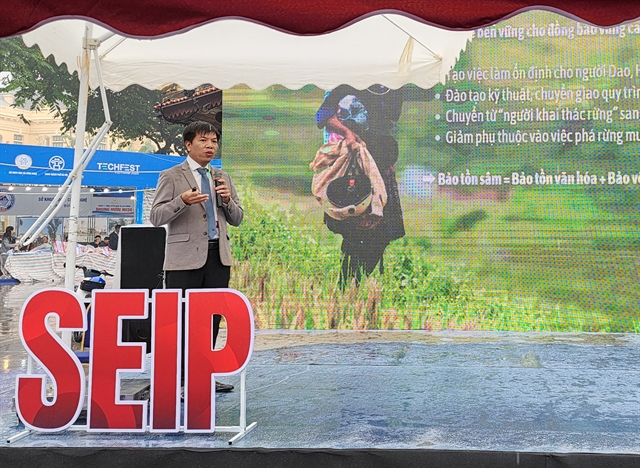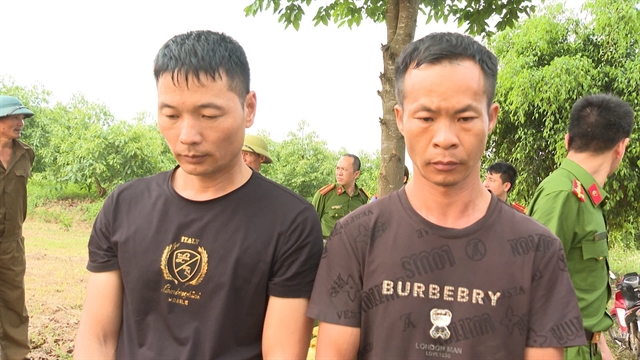 Society
Society

 |
| Shen JiangYang and Deng ZhiJi under custody. — VNA/VNS Photo |
THANH HÓA — Police in the central province of Thanh Hóa have arrested two Chinese nationals accused of desecrating the tomb of King Lê Túc Tông, a 16th-century monarch of the Lê Dynasty, authorities confirmed on Saturday.
The suspects, identified as Shen Jiangyang, 43, and Deng Zhiji, 41, both from China’s Guangxi Province, were detained earlier this month and have been formally charged with "violating corpses, graves, and remains" under Vietnamese law.
According to investigators, the two men were part of a group of three Chinese nationals involved in the unauthorised excavation of the royal tomb, located in Kiên Thọ Commune, Ngọc Lặc District. The site is part of the Lam Kinh Special National Historical Relic, which holds significant cultural and historical importance in Việt Nam.
The third suspect reportedly fled the country before the crime was discovered. Vietnamese authorities are working with their Chinese counterparts to pursue legal proceedings against the remaining suspect, pending the availability of sufficient evidence.
Initial inspections revealed a freshly dug hole at the tomb site measuring 90cm by 52cm and approximately 1.6m deep. A nearby stone stele had also been damaged.
Police recovered 14 fragments of stone engraved with Chinese characters and Lê Dynasty-era decorative motifs, including depictions of dragons. Some of the fragments bore the inscription “Đại Việt Túc Tông Nhượng...”, referencing the temple name of King Lê Túc Tông, carved in large script. Officers also collected 15 pieces of dark grey brick believed to be part of the original tomb structure.
All recovered artifacts have been sealed in iron containers and are being stored at the Lam Kinh Historical Site for safekeeping and further investigation.
The desecration was discovered on May 3, when staff from the Lam Kinh Site Management Board noticed unusual traces near the tomb and promptly notified authorities.
Shen and Deng were apprehended the following day as they attempted to flee the country in a taxi headed toward Móng Cái, a city in northeastern Việt Nam that borders China.
A broader inspection of the Lam Kinh relic complex confirmed that no other historical structures, tombs, or artifacts — including national treasures such as stone steles — had been disturbed. The site remains under close protection and regular maintenance. — VNS




